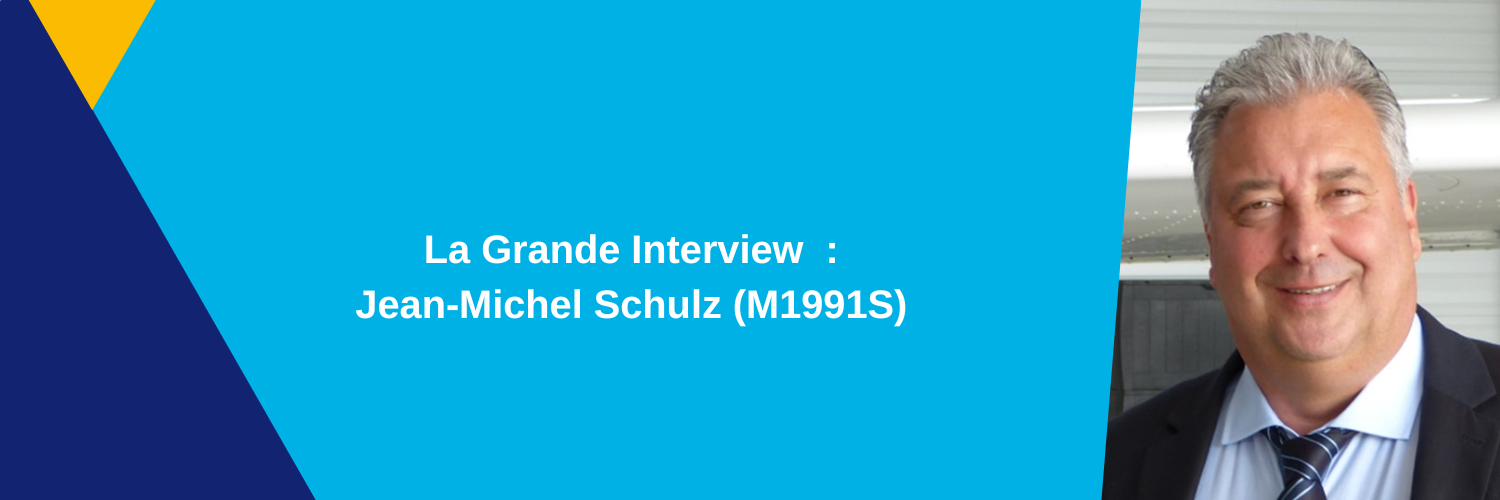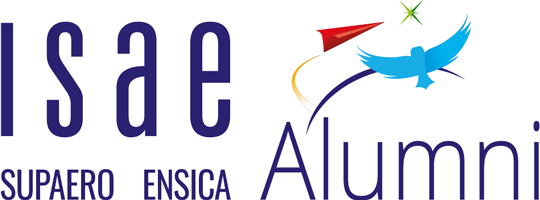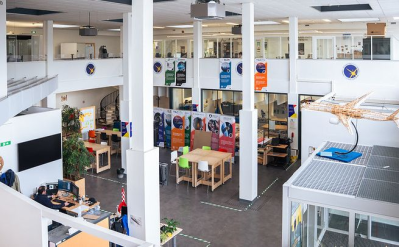News

Great interview : Jean-Michel Schulz (M1991S)
A major interview with Jean-Michel Schulz (M1991S) was conducted for ISAEdre 45. Find out more below:
"Hello Jean-Michel,
After graduating from SUPAERO'sMastèreSpécialisé® in 1991, you have just been awarded first prize in the e5t Innovation Awards (1) for your work in the field of liquid hydrogen storage and distribution. Congratulations! What has been your career path since SUPAERO, and why?
Hello. After graduating from SUPAERO, I spent twenty years in industry, holding a variety of positions including test engineer at the Délégation Générale de l'Armement, then a few years in the automotive industry in quality and industrialization at Valeo, design and industrialization of cryogenic projects at Air Liquide's advanced techniques division, and finally technical and industrial management at Hexcel Composites. In the course of these experiences, I had the chance to collaborate on innovative programs as demanding as they were exciting, such as the Mirage 2000, Rafale, Ariane 5, A380, CERN's LHC, Falcon 7X, B787 and A350, as well as numerous process innovations.
For the past fifteen years, I've been a professor of technical and industrial management at the Haute École d'Ingénierie et de Gestion du canton de Vaud in Switzerland. I wasn't destined for this academic environment, and I'm still sometimes surprised by this reorientation and the length of time it has taken. But this fine institution has given me the confidence and resources to develop a course in industrial engineering and management, which fully coincides with my atypical career path, alternating between highly technical and management positions, reconciling the worlds of design and production. I also enjoy teaching aeronautical technologies and, more recently, hydrogen technologies at EIGSI in La Rochelle. For me, teaching and transferring experience have turned out to be much more than just a job, a kind of apostolate. My students, the young and now the not-so-young graduates, are very grateful to me! I also volunteer to teach the Brevet d'Initiation Aéronautique to younger students at the Ailes Anciennes de Haute-Savoie. The associative world also brings me its share of sympathy. I like to think that innovation is not opposed to heritage, and that it can even be inspired by it.
SHZ Advanced Technologies was born out of passionate and lively family discussions with my brother Eric (former Chairman of Rolls-Royce Civil Aerospace and ex-CCO of Airbus) and my son Romain (engineer CNAM-ISAE 2021). For the past four years, we have been developing innovative technological concepts for the storage and distribution of on-board liquid hydrogen for aeronautical, land and sea transport. It is these concepts and our numerous patents that have been rewarded with e5t's top innovation prize.
Thirty years ago, when only a handful of engineers were tackling the problems of hydrogen and liquid helium, I had no idea that deep cryogenics would become a key technology of the future!
You've probably already guessed what motivates me! Passion and technological challenges, finding an essence and giving ambition to my contributions, humanity and a sense of responsibility, finally action and commitment without calculation or combination.
What problems does hydrogen still have to overcome before it can replace kerosene, and are you already seeing the beginnings of solutions?
The problems are twofold: technical and organizational.
Technically, the first step is to adapt the engines to use hydrogen as jet fuel. It's a big job, but it's a matter of developing the same architecture and reliability that led to ETOPS certification. The reliability and certification of fuel cells and all-electric aircraft are more complex. Densifying the power of an electric propulsion motor, using superconduction for example, is a real research project.
For the storage and distribution of hydrogen (which must be liquid for medium- and
long-haul commercial aircraft), we have to deal with the aircraft's architecture. Current technologies are either very well insulated, but heavy and circular ground installations, or space-based, and therefore very light, but with very low thermal efficiency, durability and number of cycles. We believe that to satisfy aircraft performance and stability constraints, safety requirements and economic conditions, it will not be sufficient to use conventional cryogenic technologies, even with the integration of composite materials. This is why SHZ Advanced Technologies has developed innovative concepts such as : tanks of any shape insulated by hollow glass beads under vacuum and held under stress to limit the thickness and weight of the outer shell, which can be integrated into cramped spaces; triple-envelope tanks with a helium pressurization circuit that prevents any hydrogen migration in the event of a leak; hydrogen withdrawal circuits using forced evaporation to maintain liquid hydrogen cooling power; or the FADHyCC regulator concept. Another challenge concerns the pressure and temperature at which the hydrogen will be reintroduced into the engines. We have therefore also invented a SEPR (Supercharger-Evaporator-Premixer-Reheater) cryogenic hydrogen gas generator.
The main organizational challenge is to create and coordinate a global hydrogen supply chain involving the entire aeronautics industry, from hydrogen producers/distributors, airports, aircraft manufacturers, engine-makers, equipment manufacturers and subcontractors, to airlines and regulatory authorities. This is far from simple, particularly in a competitive sector under pressure, structured around a duopoly with an order book of over ten thousand aircraft to be delivered over the next ten years, and where all too often, companies' operating margins are inversely proportional to the risks and investment involved!
How do you feel about sustainable development in aeronautics, and how do you perceive the younger generations at ISAE-SUPAERO in your field of interest? And, in the tradition of our interviews, what advice would you give to young people leaving the School?
Aeronautics isn't just a technology or an industry, it's a myth and a destiny.
Myths never disappear, they are reinvented to fit the present reality, which today means sustainable development. That's what we have to collectively and seriously agree to do. It's the mission of all of us, and particularly that of the younger generation of ISAE-SUPAERO graduates. We need their enthusiasm, their creativity, their intelligence, and if they have to push us around, so much the better. So, go forward into the future with boldness, without doubt, without defeatism, always on the lookout for technological solutions, with the aim of continuing to develop aeronautical and space activities, or wherever this technicality will be useful! How can we do this? By following in the footsteps of our illustrious predecessors: "Without false modesty, I'd say that I've tried not to lack imagination. With the team I've put together, I've done a lot of work. I don't let difficulties discourage me. I'm passionate about my work and I know how to put aside anything that might distract me from it. My life is simple and happy. Everything around me contributes and must contribute to the work I have set myself. Marcel Dassault (S1913).
Many thanks Jean-Michel for this interview and for your time.
I wish you and your family members every success in the development of your start-up."
Florence Loyer



















No comment
Log in to post comment. Log in.